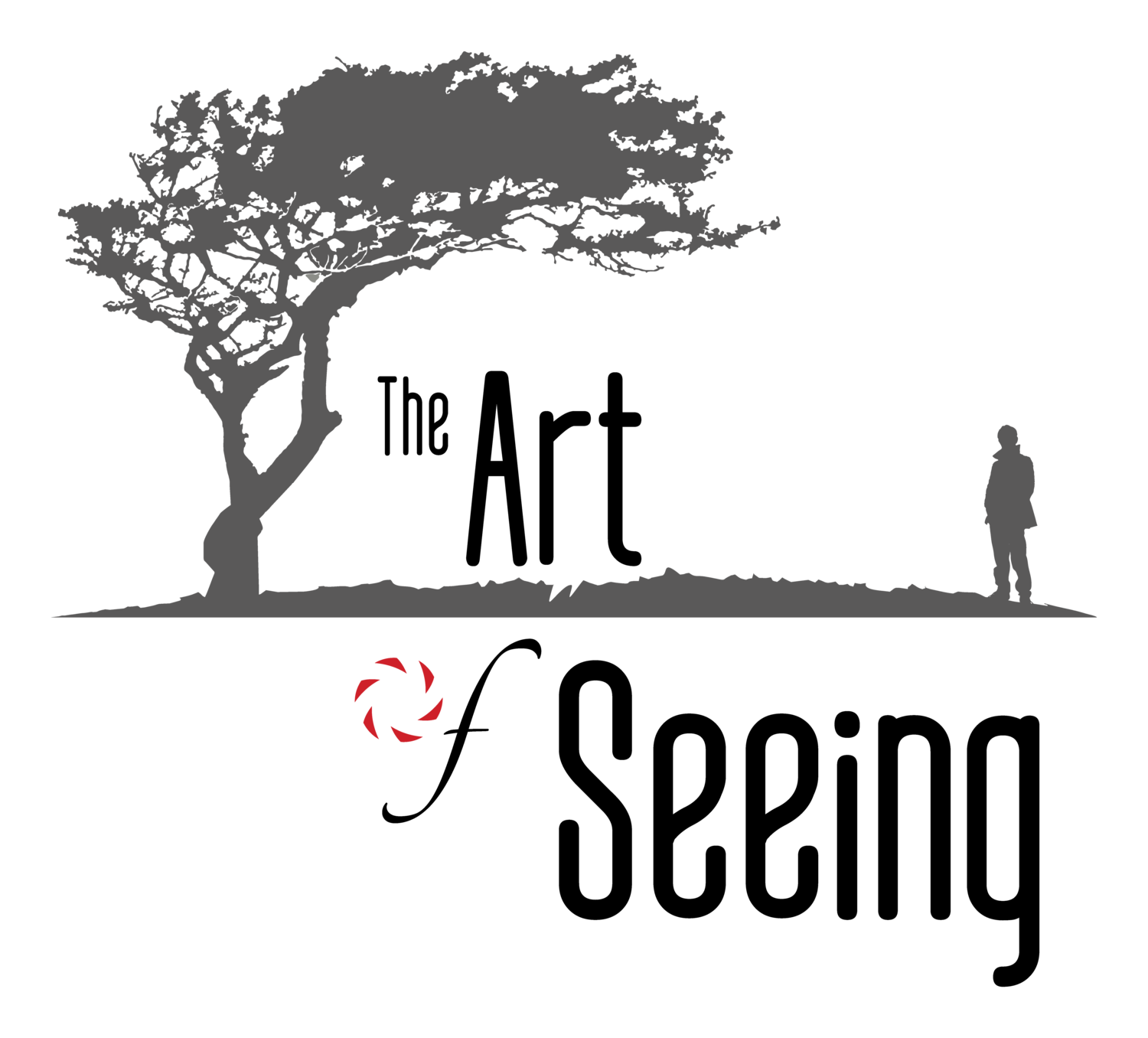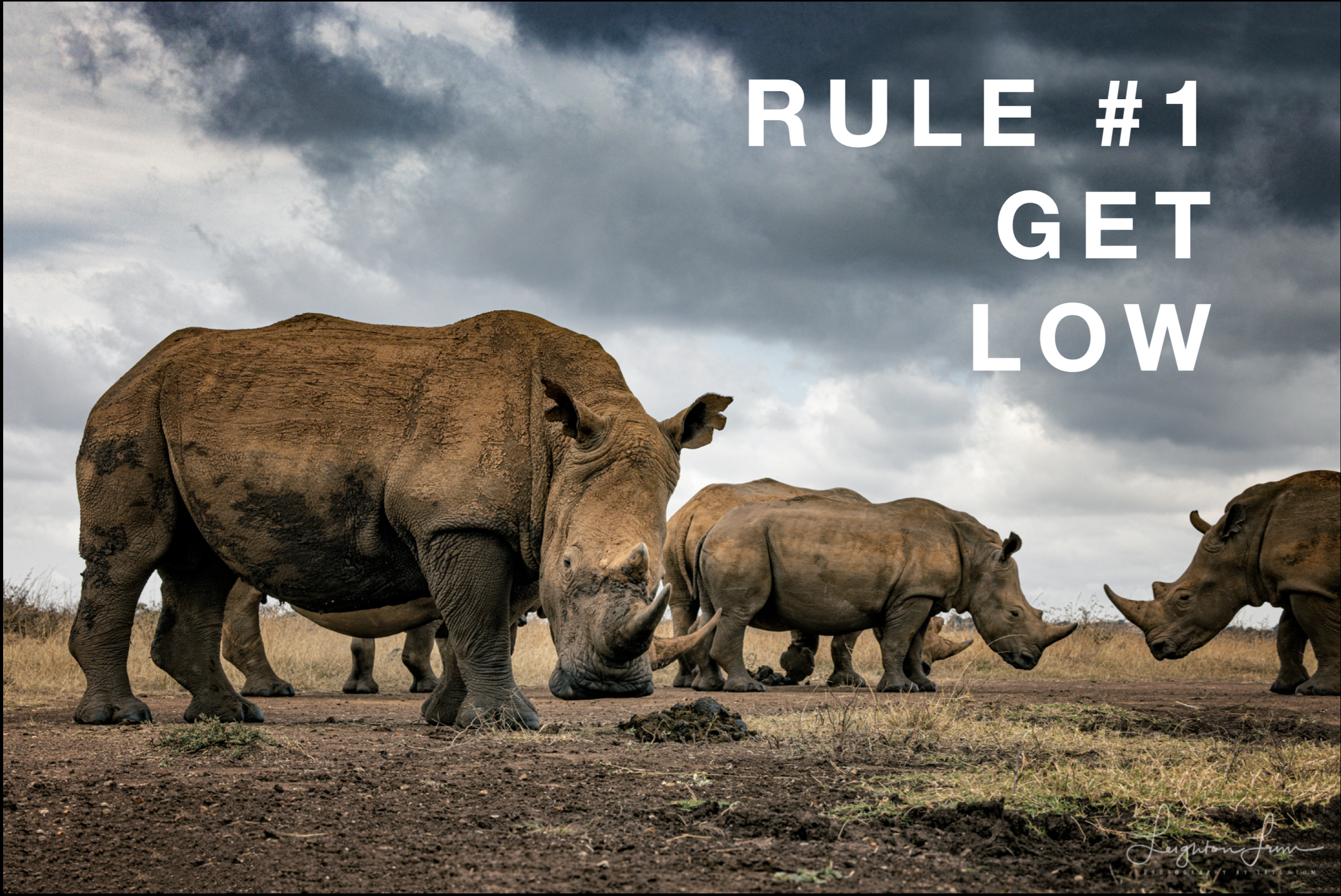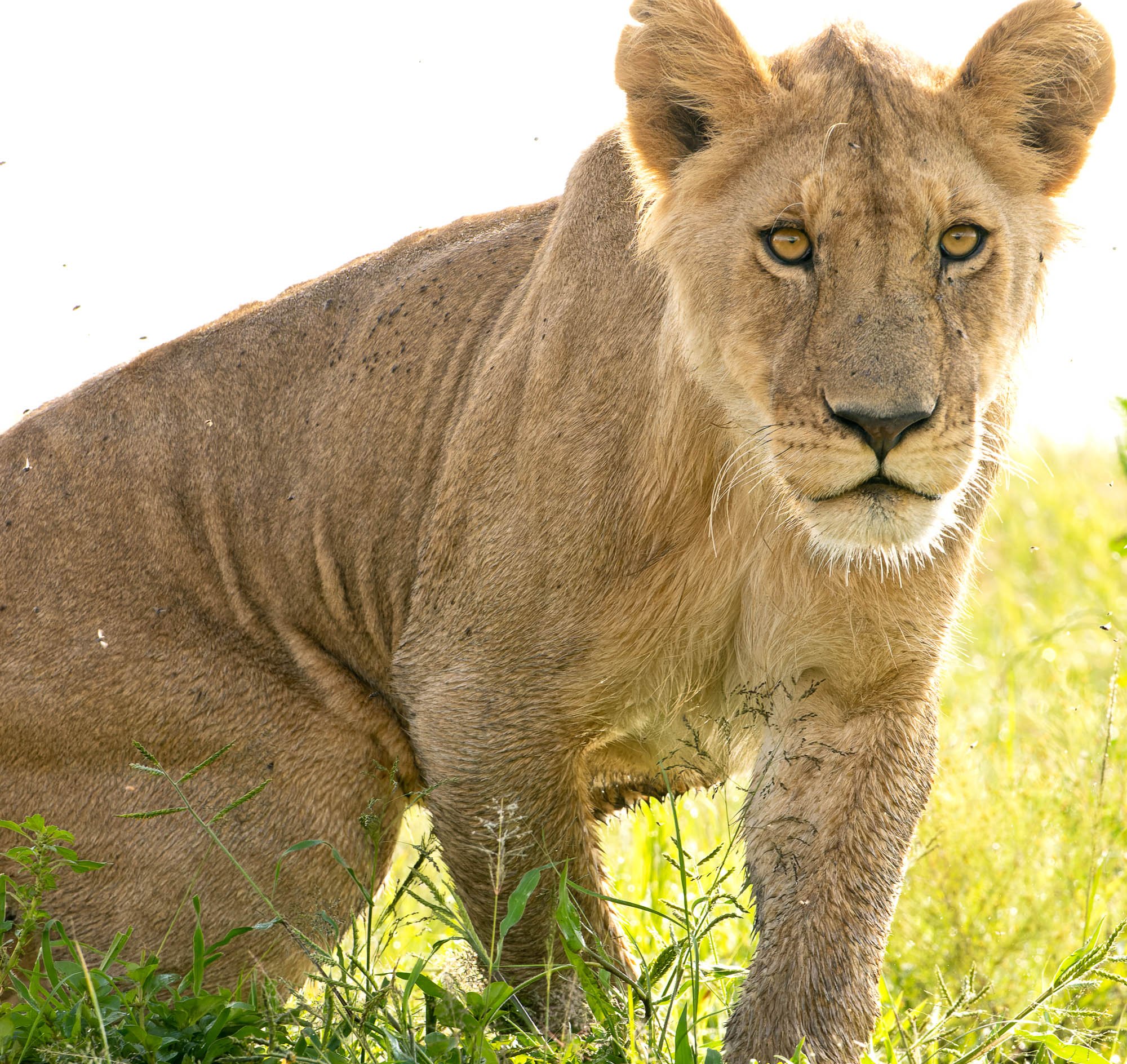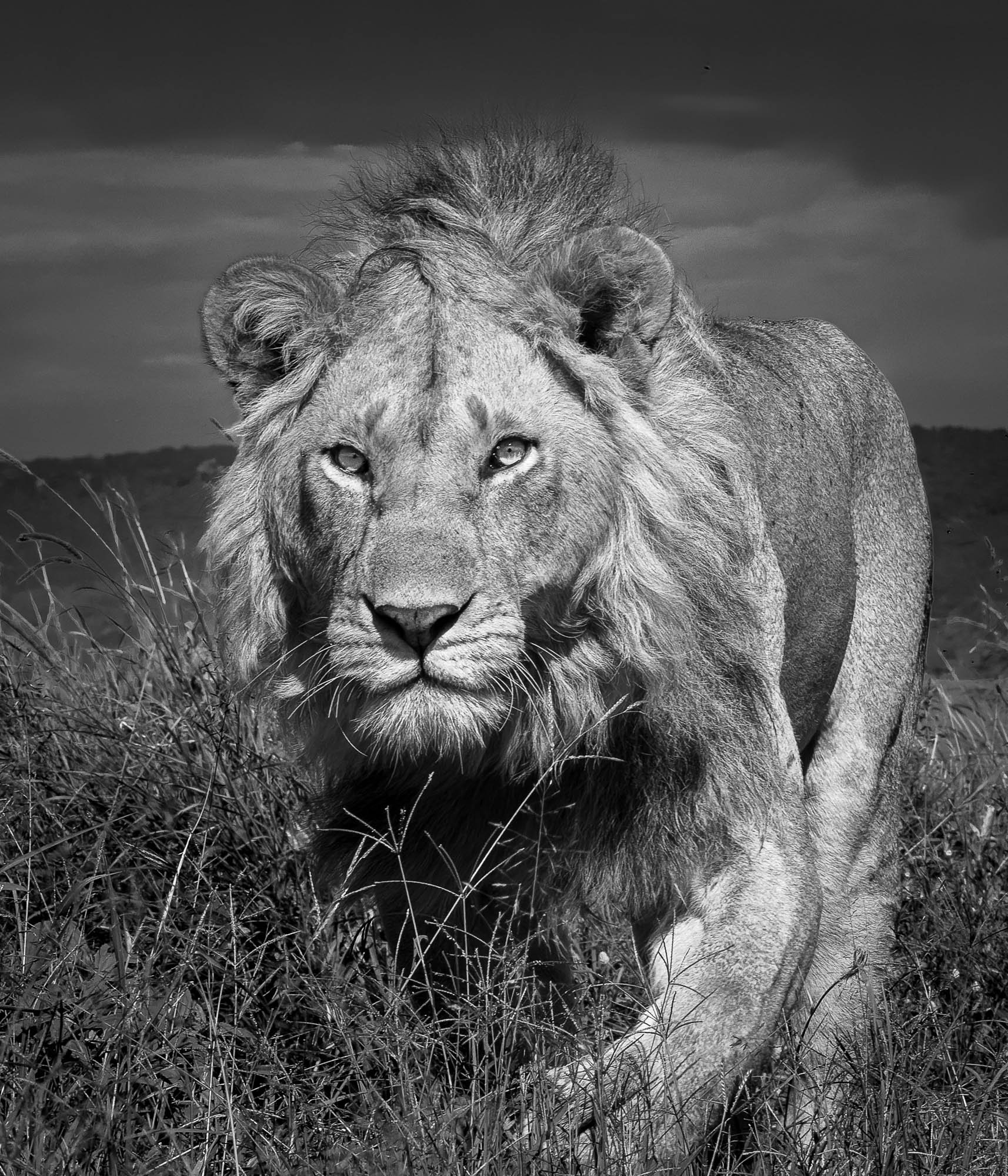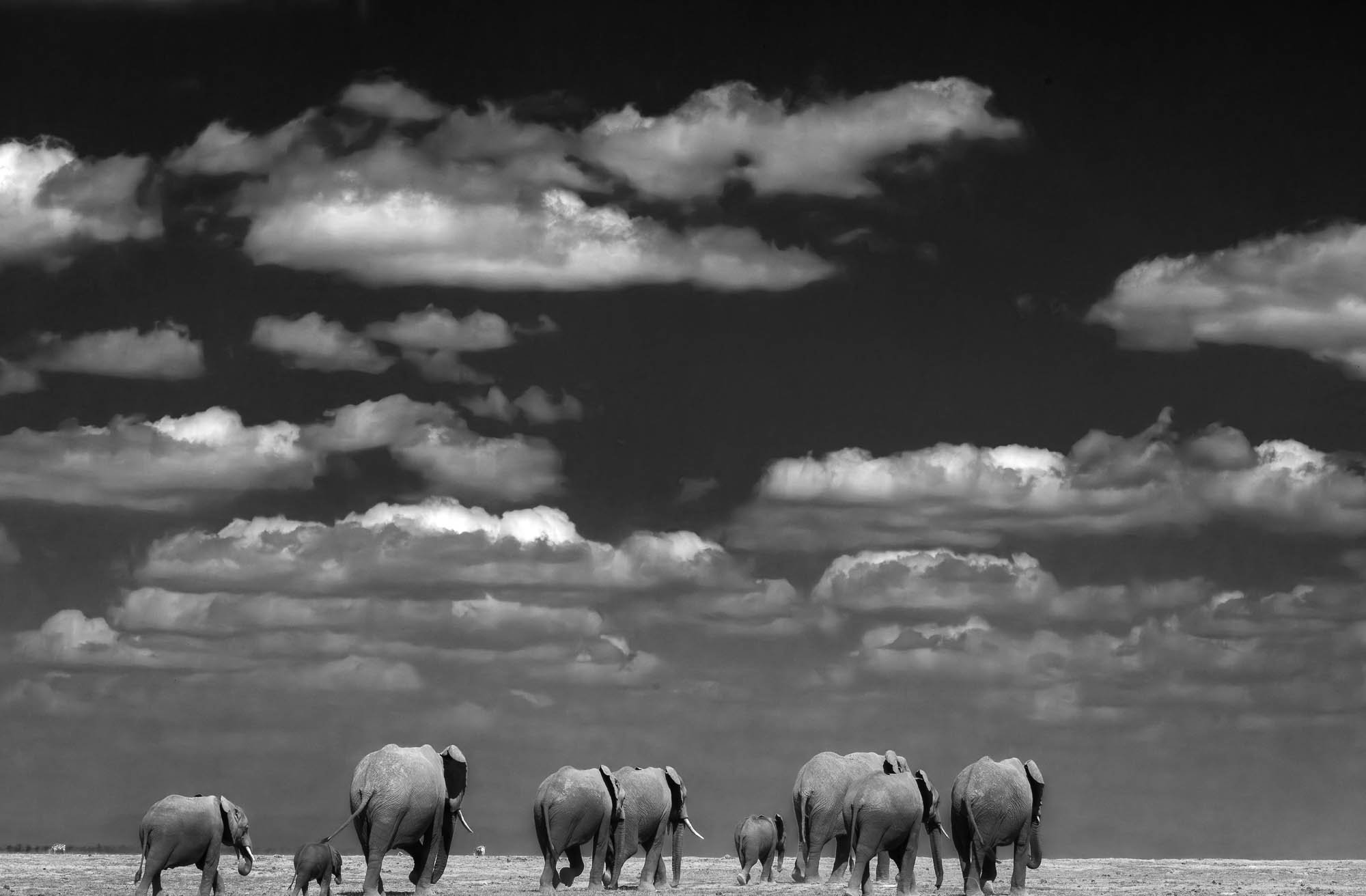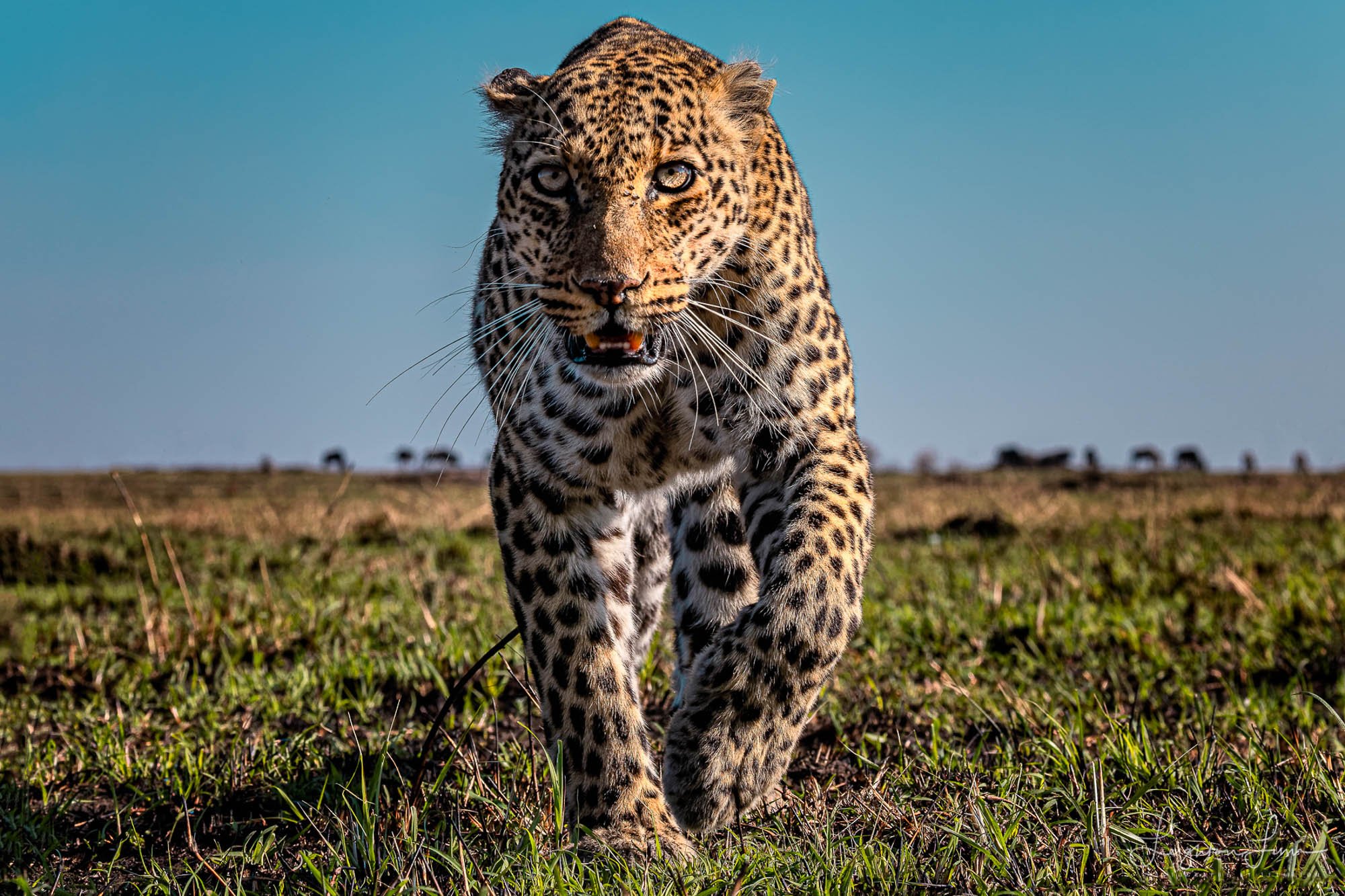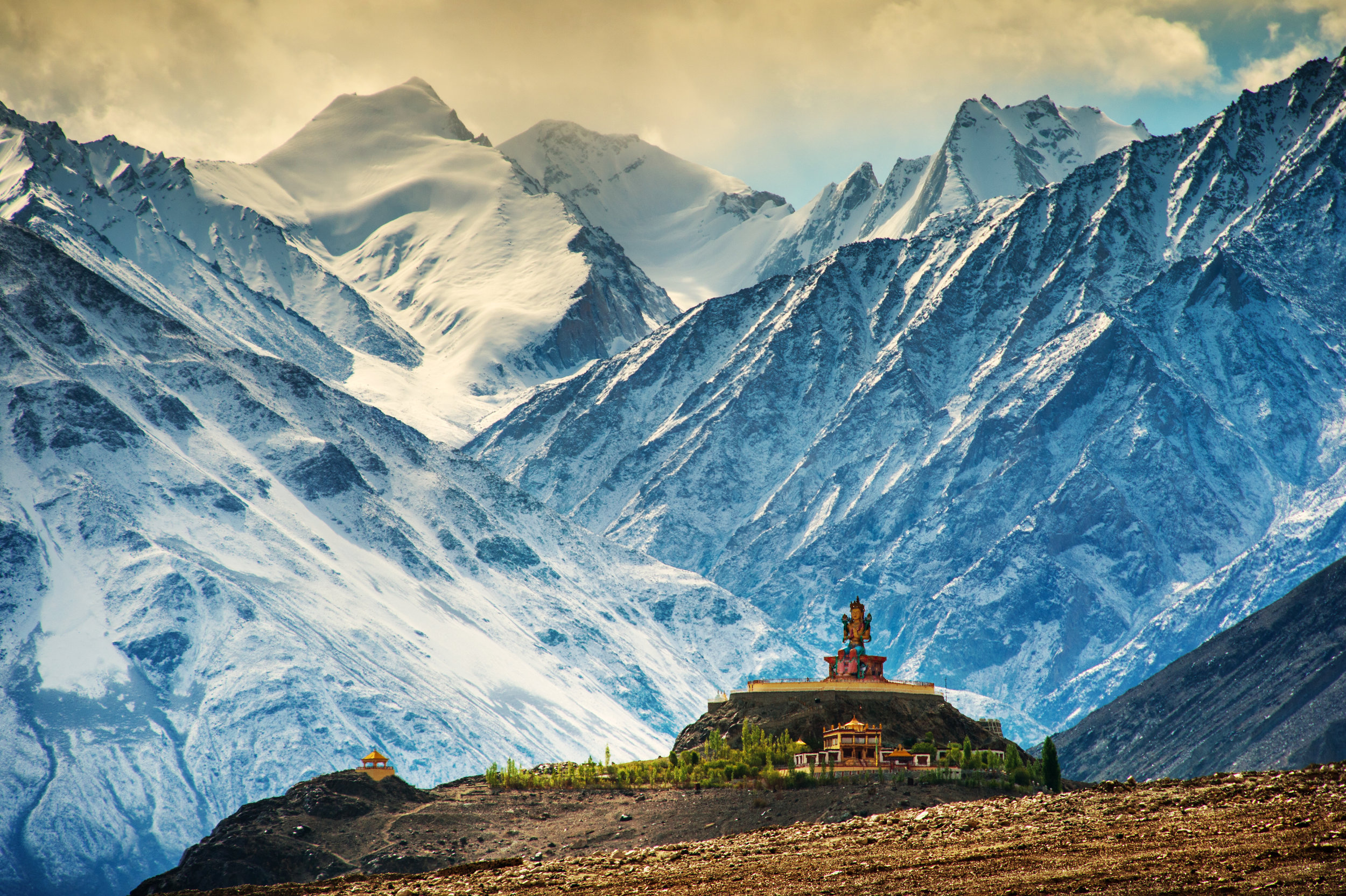
Insights and musings about photography and the creative process
Regular Photography vs Low Angle Photography vs Low Wide-Angle Photography
We’ve previously written about the why’s and how’s of ‘going low’ when photographing wildlife, but let’s explore this idea even further...
We’ve previously written about the why’s and how’s of ‘going low’ when photographing wildlife, but let’s explore this idea even further.
Regular Photography
In this example, an uncluttered background and pleasantly out of focus background (i.e. ‘bokeh’) draws attention to the subject and helps separate it from its surroundings. Nothing wrong with this photo... but could it be better?
If the ground the animal you’re photographing is standing on happens to be visually interesting or exquisitely lit, there may be no need to change your perspective to capture a great wildlife image. But we’re usually not that lucky.
That’s the problem with ‘regular’ photography. By regular, I mean standing up, shooting from above photography. It’s hard to get anything but the ground behind the animal from this perspective and the ground is usually boring (monotone or just downright ugly dirt), busy or low-contrast relative to your subject - animals typically evolve to blend in, not stand out from their surroundings. Sure, you can zoom out to include sky and other landscape elements but if you look carefully, you’ll see that the horizon is above your subject so what’s actually behind the animal in the image is ground.
Low-Angle Photography
Lowering the camera allows you to have something other than the ground behind your subject. This can create separation/contrast or introduce elements that add variety and interest to your composition such as sky/clouds, trees, landscape features or just contrasting colors or tones. Direct eye contact, which often comes with being eye-level, can also make your photo more engaging by creating a stronger connection with the subject for the viewer.
Getting on your knees, or better yet, your belly, is the price to be paid but the results are usually well worth the little loss of dignity as you struggle back to your feet.
Low Wide-Angle Photography
The hardest but potentially most rewarding of the 3 options. This method of photography requires more pre-planning, a little more risk and a lot of luck. Chances of success are much lower, but the reward is a dramatic perspective with undeniable impact!
For this technique I typically put on my 15-35mm lens and try to position the camera in the path of my subject. Camera damage or loss is a real possibility. But when everything works, the images produced are often extremely impactful and quite different from your “average” photograph.
Trial and Error is key
A lot of failed attempts will occur before a successful shot.
Curious bear, but the camera is facing the wrong direction.
This bear fell asleep next to my camera. I waited for over an hour to retrieve it.
Success! Curious bear checking out my camera
You gotta risk it for the biscuit
Remember these are wild animals, and very powerful ones. Sometimes their curiosity can cause result in unfortunate consequences for your camera. You must decide if the rewards justify the risk – or at least find out if you’re insurance covers bear damage!
Protecting the camera. I made this contraption from a Harbor Freight “pelican” case and PVC...nothing fancy, but it works!
Keys to success with low wide-angle photography
Getting sharp focus on your subject’s eyes (not nose, ears, etc.) is always a challenge, but the ‘animal eye-focus’ capabilities of modern mirrorless cameras greatly increases your odds of success. It’s not 100% accurate, but produces more hits than misses. Even so, this type of photography requires a lot of patience and repetition.
You need a way to trigger the camera from a safe distance, especially when working with animals that are potentially dangerous. I personally use the Camtraptions trigger, but there are lots of options. One weakness of most trigger systems is the short wire connecting the receiver to the camera is easily damaged so it’s a good idea to carry a spare.
Observe animal behavior – knowing the typical behavior or habits of an individual will help you better you place the camera. With bears, some individuals are more curious or calmer than others. Some bears are more skittish and won’t go anywhere near the camera. Your guide is also a great resource as they’ve spent countless hours with these animals and know their typical behaviors and individual characteristics.
Keep trying - determination and repetition is the formula for success. You may not get it on the first try or the second but eventually one shot will work out! Knowing how difficult it is to get a shot like this makes getting the shot that much more rewarding.
Good luck and happy shooting!
Getting Down in Africa – Low Angle Photography Why & How
Rule #1 of wildlife photography is Get Low. But why? And how do you even get low when you’re confined to the inside of a safari vehicle as is almost always the case in Africa?
Rule #1 of wildlife photography is Get Low. But why? And how do you even get low when you’re confined to the inside of a safari vehicle as is almost always the case in Africa?
Why Go Low?
The change in perspective that comes with a low camera angle (eye level or below) can be helpful in many ways:
Eliminate busy, boring or low-contrast backgrounds - when photographing animals from above, it’s hard to end up with anything other than the ground as a background. While that’s not necessarily a bad thing if the landscape or light is interesting, shooting from near ground level gives you options, like having sky behind your subject. Predators and prey are also naturally evolved to blend into the landscape which is great for survival but not always helpful for pictures.
Create connection – direct eye contact creates a powerful connection with your subject but it’s hard to achieve - parts of the eye are often obscured by the shadow cast from the eyelid or brow. A low angle helps you clearly see the subject’s pupil and iris. The result is a subtle but noticeable increase in impact.
Something different - a very low perspective also adds interest simply because it’s novel – it’s not the usual way we view animals. It also increases your subject’s ‘gravitas’. If you want an animal (or person) to look bigger or more imposing, shoot from below.
Show me, don’t tell me
It’s easier to show than explain, so take a look at the example images in this post and linked gallery – hopefully the difference and benefits will be obvious.
Getting Down
Now that we understand some of the benefits of a low camera angle, it’s time to move on to how to accomplish it. My friend and often co-workshop leader, Leighton Lum, introduced me to his Low Angle Monopod method during my first trip to Africa and it’s responsible for some of my favorite images.
DISCLAIMER: Use this technique at your own risk! It involves sticking parts of your body outside the safety of the safari vehicle – don’t get so absorbed in taking pictures that you lose situational awareness. If a curious lion approaches too close, get all of yourself inside the vehicle immediately even if it means leaving your equipment outside temporarily.
Equipment – The Basic Rig
Camera –it’s possible to make this technique work with a dSLR, but a mirrorless body, especially one with an articulating screen and Animal Eye Focus capabilities are really what you want.
Lens – a medium telephoto like a 70-200 mm is our recommendation. A rotating collar mount is especially helpful so you can orient your camera right side up
Monopod– nothing too special here, most models will work but something lightweight will help minimize arm fatigue. A ball head is optional but keep it lightweight as well.
Remote Release or Camera App – you’ll need a way to trigger your shutter. Every camera manufacturer makes a wireless remote release for their cameras and there are plenty of third-party options as well, all relatively inexpensive. I really like these remotes by JJC for Nikon, Canon & Sony because they work via Bluetooth, eliminating the need for a receiver/connecting cable (requires a camera w/Bluetooth capability). Your camera manufacturer’s mobile app can also serve as your remote release but we’ve seen mixed results – sometimes there’s a slight delay between pressing the button in the app and the actual camera shutter click.
The Technique
Establish a connection between remote release and camera following the instructions of your remote release hardware or app.
If using a ‘traditional’ remote release, mount the receiver in the camera’s hot shoe and connect the cable from the receiver to the appropriate port on the camera.
If using Bluetooth remote or camera app, create a wireless connection between the remote trigger and the camera according to instructions provided
Set Autofocus – Enable Animal Eye Focus and use it conjunction with the Wide/Large area or Full Screen option in AF area setting if possible.
Rotate Lens Collar – so that the mount foot is facing up and attach monopod
Tilt your LCD screen up so it’s facing up and viewable from above
Test – make sure everything (camera and remote release or app) is turned on and give it a try. Make sure you can activate autofocus and fire the shutter using your remote release or app. Practice passing the rig through a vehicle window, lowering the camera, finding and focusing on your subject, and firing the shutter. Adjust your zoom as necessary and leave plenty of room to crop and straighten crooked horizons.
Be patient and keep practicing. It’s normal to feel clumsy at first and your results may be less than stellar. This will improve with practice.
Note: if you use Back Button focus and have disabled Shutter button AF activation, you may need to re-enable it
Randall's rig
Options & Finer Points
Look, listen to your eyes – the low angle technique is a great arrow to have in your quiver but it’s not always the right choice for every image.
Switching between low angle and regular shooting is time consuming. If possible, it’s nice to dedicate a second body to low angle shooting.
The cable connecting your remote receiver to the camera is easily damaged. Carry a spare and be careful not to pinch or stress the cable connections.
In bright daylight the monitor can be hard to see. An LCD shade might help, but also keep in mind it’s not necessary to see every detail - you’re relying on the camera’s AF to achieve focus and seeing less detail is often helpful for composition.
Next level – Randall Ball’s new and improved version of the low angle rig. We’ll save the details for another post but leave it to a Cajun to take things up a notch.
Have fun, be safe, good luck!
The G.O.A.T.
Our 2018 Scouting Mission to Ladakh (Indian Himalayas) was the epitome of epic adventure travel. Every day, we said it couldn’t get better. Every day it did. Tears ran down cheeks on the final night, as we stood on the roof of a thousand-year-old monastery photographing the Milky Way with the rumbling soundtrack of throat-chanting Tibetan monks.
A monk calls his brothers to Morning Prayer
“My favorite trip of all-time? It’s a question I’m asked often. I usually give some wishy-washy answer because it feels like I’m being asked to choose a favorite child. But it’s always Ladakh that comes to mind, all due respect to my other “children” - I love you all. ”
Our 2018 Scouting Mission was the epitome of epic adventure travel. Every day, we said it couldn’t get better. Every day it did. Tears ran down cheeks on the final night, standing on the roof of a thousand-year-old monastery photographing the Milky Way with the rumbling soundtrack of throat-chanting Tibetan monks.
Little things like a pandemic have kept me from returning, but I’m finally going back in April 2024. Come with me and let me show you why Ladakh is my Greatest Of All Time!
What & Where is Ladakh?
Ladakh is a mountainous region in far northern India bordering Tibet. The Himalaya mountain range dominates much of Ladakh’s territory. The history, people, and culture here are more closely associated with Tibetan Buddhism than the rest of Hindu-dominated India. Indians often describe Ladakh as, “Heaven on Earth.”
What’s it Like in Ladakh?
Wild, Remote. Other-worldly. That’s how my first visit to Ladakh felt. The biggest mountains in the world make for some truly grand landscapes. Vast spaces, really vast and starry skies that make you feel really small. Monks and nomads living lives from another time. There are not many places like this left. I wonder how it will feel when I return. I wonder what I missed the first time. I wonder what’s changed.
Show Me, Don’t Tell Me
I get it, we’re photographers, shut up and show me the pictures. Here you go: Ladakh Photo Gallery
2024 Trip info
Want to See and experience this magical land for yourself? Click here for full details about our April 2024 Ladakh Himalayan Adventure photography workshop
Is India Your Cup of Chai?
I love India. Photographically, it’s been a personal goldmine – the source of more ‘portfolio-worthy’ travel images than any other destination – but I also find the culture, the history, Hinduism and all its offshoots endlessly fascinating as well.
But India might not have the same appeal for everyone, as I unexpectedly discovered.
Worth a watch: photographer Joey L in Varanasi, India creating images for his series, Holy Men
Chai wallah in Varanasi
Varanasi, India: Beyond is available on YouTube, Vimeo and Joey L’s website
I love India. Photographically, it’s been a personal goldmine – the source of more ‘portfolio-worthy’ travel images than any other destination – but I also find the culture, the history, Hinduism and all its offshoots endlessly fascinating as well.
But India might not have the same appeal for everyone, as I unexpectedly discovered. While researching for my first trip to India I ran across the documentary, “Varanasi, India: Beyond” and instantly added Varanasi on the Ganges to my itinerary. Ancient, exotic and the epicenter of the Hindu religion, this film confirmed that Varanasi was exactly the kind of place I dream of exploring. I’d been planning a solo scouting mission but started thinking it might be nice to have some company. So, I hatched a plan to recruit my wife and my friend David as travel companions. I invited David over for dinner and afterwards, I casually mentioned this fascinating India doc I’d come across and hit play. I sat back confident David and my wife would both be begging me to come along once they got an eyeful of Varanasi’s ancient buildings, twisted lanes and riverside stone terraces (‘ghats’) teeming with throngs of devout pilgrims accessing the blessed waters of Mother Ganga, the Ganges river. Even more captivating were the actual subjects of the documentary, religious ascetics…holy men, known as Sadhus and Agghori’s. As the credits rolled, I turned to my companions and said, “now doesn’t that just make you want to go there and see it for yourself?” After an unexpected silence, David looked me straight in the eyes and answered for both, “Ken, not no, HELL NO!”
I was shocked….and humbled. India can be a bit…gritty, it’s true, especially for western eyes. But that’s reality and isn’t that so much more interesting than some sterile manicured resort? Obviously, I had my answer, at least as far as my wife and friend were concerned.
What about you? Add Varanasi, India: Beyond to your watchlist – it’s free and I promise you’ll find it fascinating as a photographer regardless of your ideas about India. It follows photographer Joey L as he creates images for his series, Holy Men. Let me know afterwards if you add India to the bucket list or decide to save it for another lifetime. If India seems like your cup of chai, get in touch or join us in March 2023 for our next Colors of India photography adventure.
Happy Holidays, Everyone!
What Africa Teaches the Heart
My first Africa safari ended some time ago but I’m still struggling to process the experience, not to mention the over 8,000 photos I captured there! But it’s hard. Not because of the mountain of images to plow through, but because…
Lion in lovely light
Every Expectation Exceeded
My first Africa safari ended some time ago but I’m still struggling to process the experience, not to mention the over 8,000 photos I captured there. But it’s hard. Not because of the mountain of images to plow through, but because Africa exceeded my expectations in every way. From the mind-blowing quantity and diversity of wildlife everywhere – herds of elephants or giraffes around every turn, thousands of antelope and gazelle, dinosaur-sized birds flying around like pigeons, uncountable numbers of zebra and wildebeest - to the unbelievable quality of the photo opportunities – lions in sublime light, cheetahs so close they sent me scrambling for a wide-angle lens, observing the drama of the hunt from start to finish multiple times - every day had our group convinced that it just couldn’t get any better. But it did. Right up until the final morning when we witnessed two male lions chase down and kill a hyena with savage vengeance. In the aftermath, there was no doubt that this act was more about hatred than hunger.
But even then, it wasn’t over. Like a conductor bringing her audience down from the climax of a symphony, the final movement began with the slow-motion swaying of giraffes in mock battle, the entire ballet mirrored in a pool of still water. If I wasn’t busy focusing and firing frames, I would have cried. Minutes later we were at the airfield, waiting for the plane that would begin our journey home.
Just Do It
My first trip to Africa won’t be my last. I’m thrilled with the shots I got, but the misses are going to eat at me for some time. But honestly, photography is just an excuse to experience moments like these. I’m already planning another crack at the Great Migration for February 2021 with fellow photo workshop leader, Leighton Lum. But I’m pretty sure that will only mark the first of many return trips to this wildlife nirvana. If you share my passion for observing and photographing the natural world, come to Africa. Come with us, come with someone else, come on your own. Find a way, plan it, and do it. I promise you won’t regret it.
Tuskers & Kilimanjaro
Changing the Story
If you can, bring a child. Because it will be their generation that decides the fate of places like this. Pessimism about the survival of the natural world abounds and it is justified. We’ve lost so much already. But there’s also reason for hope. To save a thing, you need to first fall in love with it. My generation fell in love with the big black eyes of seal pups on the ice, the idea of oceans with whales, and seeing the majestic symbol of our nation, the bald eagle, outside of a zoo. Maybe these are isolated success stories and maybe it’s wrong to draw attention away from the battles still before us. But ideas are powerful...even stronger than fear. Fear freezes, but inspiration fuels action. Sparks are needed to ignite fires but we can’t count on YouTube and Xboxes to set young minds ablaze.
Before I stared out across the Serengeti, over the backs of a herd of wildebeest so vast I couldn't find its end even with binoculars, the stories millions of bison once roaming our Great Plains were just that, stories that lived in my head. After seeing the Great Migration with my own eyes, I understand in my heart what we once had and lost. We may never recover all that we’ve squandered but perhaps young hearts inspired by the sight of a world that once was will be foolish enough to try. And that might just be enough to change the story of life on this planet.
Spirit Bears
Spirit Bears of the Great Bear Rainforest is exactly the type of experience I envisioned creating for other photographers when I started my workshops business. Small group, photography intensive adventures in the world’s most spectacular settings. If this idea excites you, I invite you to join us this Oct 5-10 for a trip you will never forget.
I’m so excited to announce our latest workshop, Spirit Bears of the Great Bear Rainforest. Last year’s scouting trip to this remote region of coastal British Columbia was richly rewarding and the culmination of a journey back to an area that long ago seized my imagination and never let go. My previous foray to the Inside Passage was a week-long fishing/photography trip based out of the small island community of Bella Bella. I wish I had pictures of the pod of orcas that approached, swam directly under our little skiff and surfaced so close on the other side that I could have reached out and touched them. But my fumbling fingers, ISO 50 film and lack of autofocus conspired to create just another 'one that got away' story. Many moons have passed since that magical moment but the memories of satin smooth seas, rocky conifer covered islets, circling bald eagles and salmon, lots of salmon, never faded the way most others do.
So when I started hearing tales of a mysterious white bear living in the most remote corners of the rainforest, I knew I had to find a way back. I finally made it last year and the bears and the rainforest did not disappoint. This time I have pictures and now I invite you to come see, photograph and experience it for yourselves.
Pristine & Primordial
The Great Bear Rainforest is the largest temperate rainforest remaining on the planet. It’s massive, essentially comprising the entire Pacific coast of British Columbia and its outlying islands. These countless islands and surrounding seas are collectively known as the Inside Passage. The word pristine was invented for places like this. When you stand streamside and witness a ceaseless parade of salmon splashing their way upstream and then lift your gaze to take in a moss-draped cedar, perhaps a thousand years old, tangled in the vines of dense old growth forest, you’ll understand exactly what I mean. Things feel old and pure and perfect here. Then, just when you’re beginning to wrap your brain around the magnificence of the scenery, a four-legged ghost silently walks out of the woods. I know this sounds ridiculously hyperbolic but it’s actually a pretty accurate description of my experience just a handful of months ago. And, like I said, I have pictures.
Man’s footprint isn’t nonexistent here, it’s not anywhere. But in The Great Bear Rainforest you have to look hard to see its faint outlines.
Sacred Symbols
Ghost bear, Spirit bear, Kermode bear - whatever you call this magnificent creature, everything about it is special. It is one of the rarest bears on earth with total population estimates ranging from 100 to 400, no one really knows. Science says Ursus americanus kermodei is actually a subspecies of the American black bear and their fair coats are the result of rare recessive genes. But to the First Nations peoples of the area they are sacred spirits, Ghost Bears, their coloration the result of an ancient bargain made with wise Raven to remind us of an age when the world was covered with ice and snow.
Their mythical status has been a rallying point to various First Nations groups struggling to claim and protect their traditional territories. Environmental organizations have also capitalized on the Spirit bears’ charismatic qualities by giving it a starring role in the fight to protect The Great Bear Rainforest. Last year, their efforts were rewarded with final legislation that permanently protects the great majority of old growth forest in the GBR from logging. The so-called 'panda of Canada' turned out to be a very persuasive symbol of the wildness and beauty that stands to be lost if we don’t defend natural places. But the fight continues, with the focus now shifted to stopping a proposed oil pipeline terminal which would make the Inside Passage a transportation corridor for giant oil-filled tankers headed to China. Will a photogenic bear be enough to overcome economic needs and greed? The future is unclear.
Join Us
Spirit Bears of the Great Bear Rainforest is exactly the type of experience I envisioned creating for other photographers when I started my workshops business. Small group, photography intensive adventures in the world’s most spectacular settings. If this idea excites you, I invite you to join us this Oct 5-10 for a trip you will never forget. But act quickly because this workshop is limited to only 5 participants and will sell out quickly. Check out the workshop page for more details or go to my Spirit Bears gallery to see additional photos.
See You Next Time!
The Wild Mustangs of the Adobe Valley workshop is officially SOLD OUT for 2018. Sign up for our mailing list to learn about our upcoming workshops.
See you in 2019!
The Wild Mustangs of the Adobe Valley workshop is officially SOLD OUT for 2018 but we'll still be here waiting for you in 2019! I'll be bigger and stronger then, but I'm sure I'll have some new bothers and sisters to Awwww over too :). If you really wanted to come, add your your name to the waitlist in case someone changes their mind. Otherwise, make sure you're signed up for our mailing list so you'll be notified when the next workshop is announced.
Ladakh Himalayan Scouting Mission
The Art of Seeing is taking 1-2 adventurous souls on a very special scouting mission to Ladakh, India. Learn more about this photography trip today.
Tibetan Buddhism dominates the spiritual lives of the inhabitants of this region. Monasteries, some over a thousand years old, are found throughout the mountains.
My latest workshop is a little different…it's what I call a 'scouting mission', meaning it's the trip I make to work out all the details for a future workshop. Normally, I do these trips alone, but this time I'm looking for 2 or 3 adventurous souls to join me in Ladakh, India June 28 - July 11, 2018. The highest mountains in the world, the Himalaya, run right through this remote region of northern India…this is the land of the snow leopard and home to indigenous cultures that have existed in isolation for millennia. This trip is not for everyone, however. We’ll be working long hours and covering a lot of ground with our feet. There are no guarantees...we may very well arrive at just the right place at just the wrong time. That's what I mean by scouting mission. But if you have a taste for adventure, can live with some uncertainty, and welcome the idea of traveling with a very small group, we should talk. Or maybe you’ve always wanted to know how I and other workshop leaders create their events…well, here’s your chance to see how the sausage is made :).
If you are interested, please read the workshop description carefully before registering. Contact me if you have any questions. Hope to see you in the mountains!
Elaborate headdresses are worn by the Drokpa of the Dha Hanu valley
